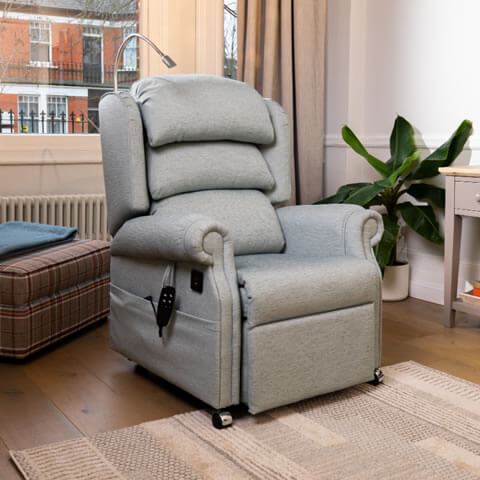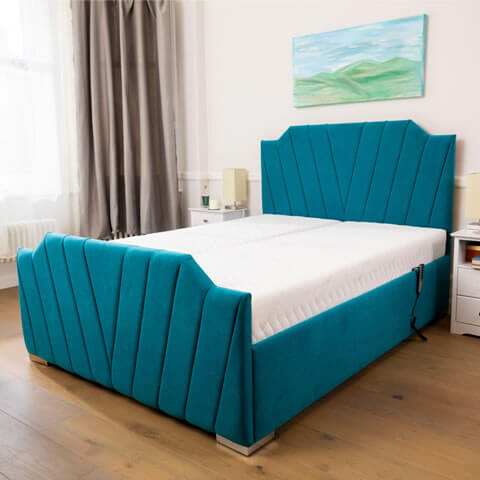How to Deal with Sarcopenia in Old Age
As we grow older, staying active and strong becomes more important than ever. Many people notice their muscles weakening or everyday activities becoming harder. This gradual loss of muscle strength and size is known as sarcopenia. While it’s a common part of ageing, there are many ways to manage it and maintain independence.
What is Sarcopenia
Sarcopenia is an age-related condition that causes muscles to weaken and shrink over time. It can affect between 10–30% of older adults, and impacts 38% of individuals living in care homes.
It often begins around the age of 50 and becomes more noticeable between 65 and 80. The condition can develop faster in people who live a sedentary lifestyle or have poor nutrition. Chronic illnesses like arthritis or diabetes can also make symptoms worse.
Although it can’t be completely prevented, sarcopenia can be slowed and even improved with the right approach.
Sarcopenia Symptoms
Recognising the early signs of sarcopenia is key to managing it effectively. Common symptoms include:
- Loss of muscle strength, especially in the arms and legs
- Slower movement or reduced stamina
- Poor balance or frequent trips and falls
- Difficulty standing from a chair or climbing stairs
- Noticeable reduction in muscle size
These changes can make daily tasks harder and increase the risk of falls or injuries. If you notice these signs in yourself or a loved one, taking action early helps maintain mobility and confidence.
Sarcopenia Management in Old Age
Age is the most common cause of sarcopenia. Between 65 and 80, natural muscle decline happens faster, especially without regular exercise or good nutrition. However, this condition isn’t inevitable. Small daily habits can maintain your strength and keep you moving for longer.
The main areas to focus on are exercise and diet. Together, they can make a big difference to muscle health and overall wellbeing.

Exercise for Sarcopenia
Exercise is one of the most effective ways to combat age-related sarcopenia. Even gentle movement can help rebuild muscle strength and balance.
Resistance training is particularly beneficial. Using light weights, resistance bands, or body-weight exercises helps maintain muscle tone and function. If you’re new to exercise, start slowly and increase intensity as your confidence grows. If lifting weights isn’t suitable, try walking each day. A brisk 20-minute walk supports heart health and keeps muscles active.
Balance exercises are also important. Activities like tai chi or gentle yoga improve coordination and reduce the risk of falls. Gardening can be another alternative to strenuous exercise too, helping to build strength and balance, while benefiting mental health.
It’s always best to check with a GP or physiotherapist before starting a new exercise plan. They can recommend safe, personalised routines that suit your ability and needs.
Supportive furniture can also help you stay active at home. For example, riser recliner chairs make standing and sitting easier, reducing strain on weakened muscles. They also encourage safe, comfortable movement throughout the day. Adjustable beds provide a similar type of support, assisting with strenuous movements and providing the support your body needs.
Diet for Sarcopenia
A balanced diet plays a key role in sarcopenia management. Muscles need protein to rebuild and stay strong, so eating enough each day is vital.
Good sources of protein include fish, eggs, dairy, lean meats, beans, and lentils. Aim to include one or more protein-rich foods with every meal. Omega-3 fatty acids also support muscle and joint health. These can be found in oily fish like salmon and mackerel, or plant-based sources such as flaxseed and walnuts.
Don’t forget essential vitamins and minerals. Vitamin D helps muscles work properly, while calcium supports strong bones. Try to get some natural sunlight each day and eat dairy or fortified foods where possible.
Staying hydrated is equally important. Even mild dehydration can reduce strength and energy levels. Keep a glass of water nearby throughout the day and drink regularly.
Eating regular, nutritious meals helps maintain energy for movement and daily activities. Creating a comfortable dining space or using supportive furniture can make mealtimes easier and more enjoyable.
Living Well with Sarcopenia
Sarcopenia doesn’t have to mean losing independence. With a few changes to daily habits, many people continue living active, fulfilling lives.
Keeping a regular routine of light exercise and balanced meals makes a huge difference. Focus on small, sustainable improvements rather than quick fixes.
If you’re helping an older relative manage sarcopenia, encourage gentle daily movement. Even stretching, walking around the home, or standing from a chair several times can strengthen muscles over time.
Maintaining a safe and supportive home environment also helps. Keep walkways clear, ensure good lighting, and consider mobility furniture that promotes movement without discomfort.
Supporting Strength and Comfort at Home
At Grosvenor Mobility, we understand how important it is to stay active and independent later in life. Our adjustable beds and riser recliner chairs are designed to support comfort, movement, and confidence every day.
With our free home trial, you can experience the difference for yourself. A trained specialist will bring the furniture to your home, help set it up, and answer any questions.
Together, we can help make living with sarcopenia safer, easier, and more comfortable.

Riser Recliner Chairs
We believe everyone deserves the freedom to relax in complete comfort and independence at home. That’s why we proudly offer a premium range of riser recliner chairs and adjustable beds, designed to support your lifestyle and make everyday living comfortable again.

Adjustable Beds
The bedroom is your sanctuary. It’s your place to rest, unwind and totally relax. But to do so, you need the perfect adjustable bed; comfortable and luxurious. At Grosvenor Mobility our range of electric mobility recliner beds do just that. Featuring easy-to-use handsets that operate our ultra-quiet motors allowing you complete control at the touch of a button.




